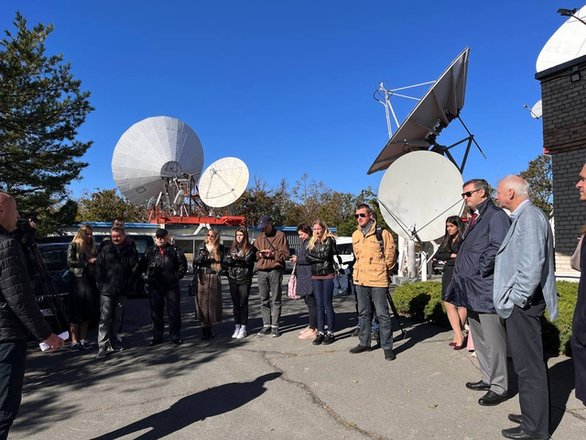“Digitization” is getting closer: RSCC and RTCOMM continue to work actively to provide satellite communications in the Far East
On 4 October, a press conference was held in Vladivostok by RSCC’s Director General Alexey Volin, RTCOMM’s Director General Sergey Ratiev, and the Deputy Prime Minister of the Primorsky Territory (PT) – the PT Minister of Digital Development and Communications Konstantin Voloshin. This event was dedicated to the 65th anniversary of the launch of the world's first artificial satellite into low Earth orbit.
At the press conference, experts discussed the role of satellite communications in digitalization of the Far Eastern Federal District and provision of all modern communications services using the RSCC satellite constellation.
“The development of the Far East region is a priority direction of the country's economic policy, which is impossible without reliable communication. And in view of its large territory and low population density, a satellite here is the most advantageous solution from an economic and technological point of view. 90% of the territory of the Far Eastern Federal District, where more than eight million people live, can be covered with the help of RSCC spacecraft. Today, satellite means digital television, communications, Internet access. Services are especially in demand in hard-to-reach and sparsely populated areas – where terrestrial networks are absent or underdeveloped. And we can see that actually there is a demand for our services. Today, the Far East is the leader in the consumption of high-speed satellite traffic: 84.09% of the total number of broadband access users in the Ka-band are residents of the region,” said Alexey Volin.
Four of the 12 satellites of the RSCC's own constellation – Express-AT2, Express-AM5, as well as new satellites Express-AMU3 and Express-AMU7 in the geostationary orbit arc from 103°E up to 145°E – provide communications to the Far East. The total satellite bandwidth involved in the territory of the Far Eastern Federal District is about 3,000 MHz in the C- and Ku-bands. Communication channels account for 2300 MHz and, in particular, about 300 MHz are used in Primorye.
In addition, TV and radio channels of the first and second multiplexes for the Far Eastern time zones are broadcast with the help of these satellites. The satellite signal is received by 975 RTRN stations throughout the Far East region, including 152 stations in Primorye. As a result, more than 95% of residents of the Far Eastern Federal District can receive free digital terrestrial television – this is 7.67 million people. Packages of satellite direct broadcast operators NTV Plus and Orion-Express are also broadcast through the RSCC satellites, providing the population with full access to the entire range of TV and radio programs.
An important aspect of the development of the region is digitalization of ships in the Pacific Ocean. RSCC provides 380 fishing vessels and 13 special ice-class vessels in the Far East with broadband communication channels up to 10 Mbps. Now the crews can communicate with their families and friends and use all telecommunication services while at sea.
RSCC provides its services to end users together with the RTCOMM operator, one of the key partners of RSCC, which uses the company's satellite bandwidth to provide services throughout Russia, including in the Far Eastern Federal District.
In turn, RTCOMM Director General Sergey Ratiev emphasized, “Our goal is to make satellite Internet widely available in every point of our country, to provide communication where it is impossible to organize it in other ways. The replenishment of the RSCC constellation with new satellites expands our capabilities and allows us to more actively develop modern satellite solutions in Siberia, the Far East and the North. In particular, we offer an integrated service for mining companies, with which the business organizes not only a communication channel for corporate purposes, but also enables employees recruited on a rotational basis to have a full-fledged online life. To do this, special HotSpot access points are deployed on the ground, and within their coverage area users have access to the Internet from their personal electronic devices. The ability to be in touch with relatives and friends, to have access to common applications for employees of such companies significantly increases the attractiveness of jobs in remote areas.”

